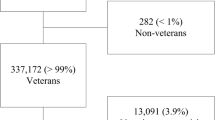Abstract
Over the past several years, the healthcare industry has been struggling as a whole for effective ways to manage chronic disease and illness. In the US and in countries with socialized medicine, healthcare has either been rationed, restricted or had access limited to various healthcare services via traditional resource utilization approaches. In the US, utilization management approaches practiced by healthcare insurance companies, primarily Health Maintenance Organizations (HMOs), has suffered through a barrage of legal and regulatory hurdles as a result of consumer backlash to such restrictive programs. Thus, greater emphasis on case and disease management programs has emerged as a more progressive means for improving health outcomes in the chronically ill population.
A challenge confronting facilitators of these programs is the ability to integrate various case and disease management modalities into a seamless care management model that will yield optimal patient outcome opportunities. Case/disease management (CDM) can be best summarized as an ‘integrated’ approach to managing healthcare that identifies the optimal treatment approaches for patients with a specific disease and implements processes to afford compassionate and clinically evidenced-based care that will prevent disease complications and improve the health and quality of life of a given patient or patient population. However, depending on the facilitator of these programs (insurer, employer, independent vendor of services), CDM can have many different meanings and will vary in the scope, specificity and intensity of programs provided, as well as the level and extent of its major components.
An integrated program involves many considerations, such as: how an organization defines CDM and its true objectives, whether an effective infrastructure is in place to support it, what barriers exist that could potentially impede the program’s success, having the right technology to support outcome measurement and developing collaborative partnerships with providers, vendors and purchasers to streamline program costs and improve overall efficiency.
A description of the differences and similarities in CM and DM programs is given, including each program’s major components and how these models could evolve into a more integrated healthcare model. An overview of the most common care barriers is emphasized, affording careful consideration to healthcare design and how the current delivery system should be remodeled. A discussion of the utility and challenges of outcome management is put forth in order to aid CDM facilitators and other healthcare providers in futuristic outcomes planning and implementation.





Similar content being viewed by others
References
Hoffman C, Rice D, Sung HY. Persons with chronic illness: their costs and prevalence. JAMA 1996 Nov 13; 276 (18): 1473–9.
The Foundation for Rehabilitation Education and Research. The evolution of case management. Commission for case manager certification. Rolling Meadows (II): The Foundation for Rehabilitation Education and Research, 1997: 1–4.
Peterson C. Disease management: a team approach to chronic care. HMO Magazine 1995 May/Jun; 36 (3): 38–47.
DMAA. Definition of disease management. Available from URL: http://www.dmaa.org/definition.html [Accessed 2002 Mar 26].
Villagra V. Perspective: care management an effective new tool. Bus Insurance 1998 Oct 12: 17.
Warren BH, Puls T, Fogelstrom-DeZeeuw P. Cost-effectiveness of case management: experiences of a university managed health care organization. Am J Med Quality 1996; 11 (4): 173–8.
Gurnee MC, DaSilva RV. Constructing disease management programs. Manage Care Mag 1997; 6 (6): 67. Available from URL: http://www.managedcaremag.com/archiveMC/9706/9706.disease_man.shtml [Accessed 2001 Oct 25].
Radzwill M. Cover story: doing battle in a binding business. Managed Healthcare 1999; 9 (7): 22–5.
Wojcik J. Spotlight report: evolution of disease management. Bus Insurance 1996 Feb 19: 3–4.
Thornburg L. Teach employees self-care to cut costs. HR Mag 1995; 40 (8): 36–8.
Dial W. Scope of case management continues to broaden. Manage Healthcare News 1995; 11(11): 1, 20–1.
Pinney Associates. Barriers to implementing disease management programs. Drug Benefit Trends 1997; 9 (2): 11–7.
Manga P, Angus DE, Papadopoulos C, et al. A study to examine the effectiveness & cost effectiveness of hriopractic management for low back pain. Ottawa (ON): Canada Ontario Ministry of Health; Pran Manga & Associates, 1993 Aug: 11–12, 59–64.
Horn SD, Sharkey PD, Tracy DM, et al. Intended and unintented consequences of HMO cost-containment strategies: results from the managed care outcomes project. Am J Managed Care 1996; 2 (3): 237–47.
Bartels SJ, Horn SD, Levine K, et al. Treatment of depression in older primary care patients in health maintenance organizations. Int J Psych Med 1997; 27 (3): 215–31.
Downy C. Setting limits: formularies and physician prescribing. Healthcare Bus Digest 1998 Jan; 3 (1): 53–6.
Browne RA. Implementation issues in disease management programs: a pharmaceutical perspective. Med Interface 1995; 8 (4): 60–6.
Weingarten S. Using practice guidelines compendiums to provide better preventive care. Ann Intern Med 1999; 130: 454–8.
Roper W. Defining health outcomes. Outcomes guidebook. Health Outcomes Institute [online]. Available from URL: http://www.healthoutcomesresearch.com/frameset2.html [Accessed 2001 Oct 26].
Kozma CM. Clinicians and insurers: the role of outcomes. Manage Care Interface 2000; 7 (13): 50–1.
Tse CS. Outcomes measurement across the continuum of care. Med Interface 1997 Aug 10 (8): 103–7.
Fox A. Data warehousing: avoiding the pitfalls. Behav Health Manage 2000; 3 (20): 14–9.
McCormack J. Data mining: digging for real answers. Healthcare Data Manage 1998; 4 (6): 78–84.
Schneider P. Wrestling over best practices -the rise of computer-aided decision making. Health Informatics 1997 May: 26–32.
Gillespie G. A pillar of support. Healthcare Data Manage 1999; 7 (8): 58–65.
Chin T. Gathering clinical data. Healthcare Data Manage 1998; 6 (1): 45–57.
Siwicki B. Crafting new methods of systems integration. Healthcare Data Manage 1997; 5 (6): 83–8.
Driggs G. The internet as the road to better outcomes. Behav Health Manage 2000; 20 (3): 21–3.
Acknowledgements
There was no funding for this article.
Author information
Authors and Affiliations
Corresponding author
Rights and permissions
About this article
Cite this article
Radzwill, M.A. Integration of Case and Disease Management. Dis-Manage-Health-Outcomes 10, 277–289 (2002). https://doi.org/10.2165/00115677-200210050-00002
Published:
Issue Date:
DOI: https://doi.org/10.2165/00115677-200210050-00002




